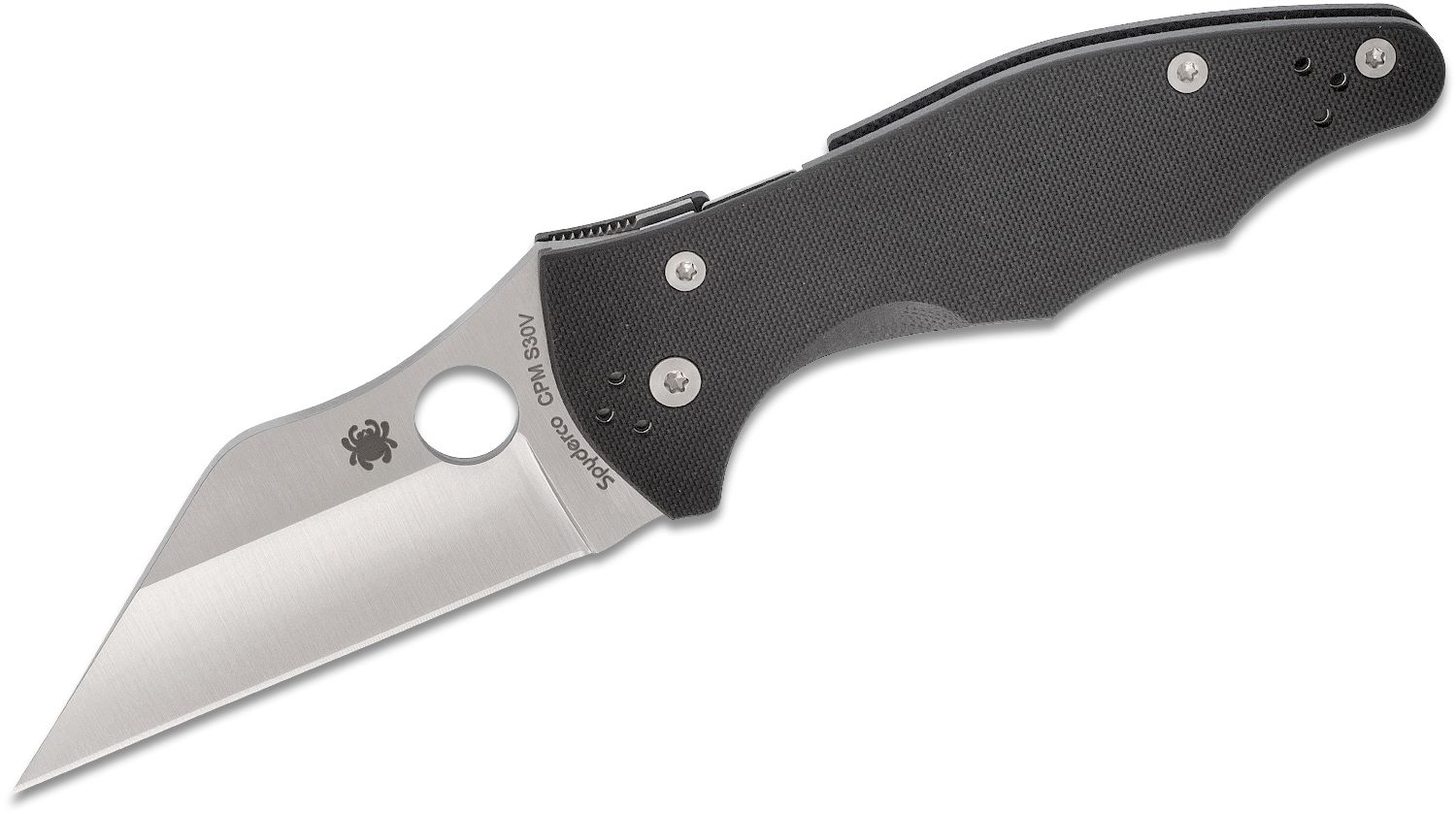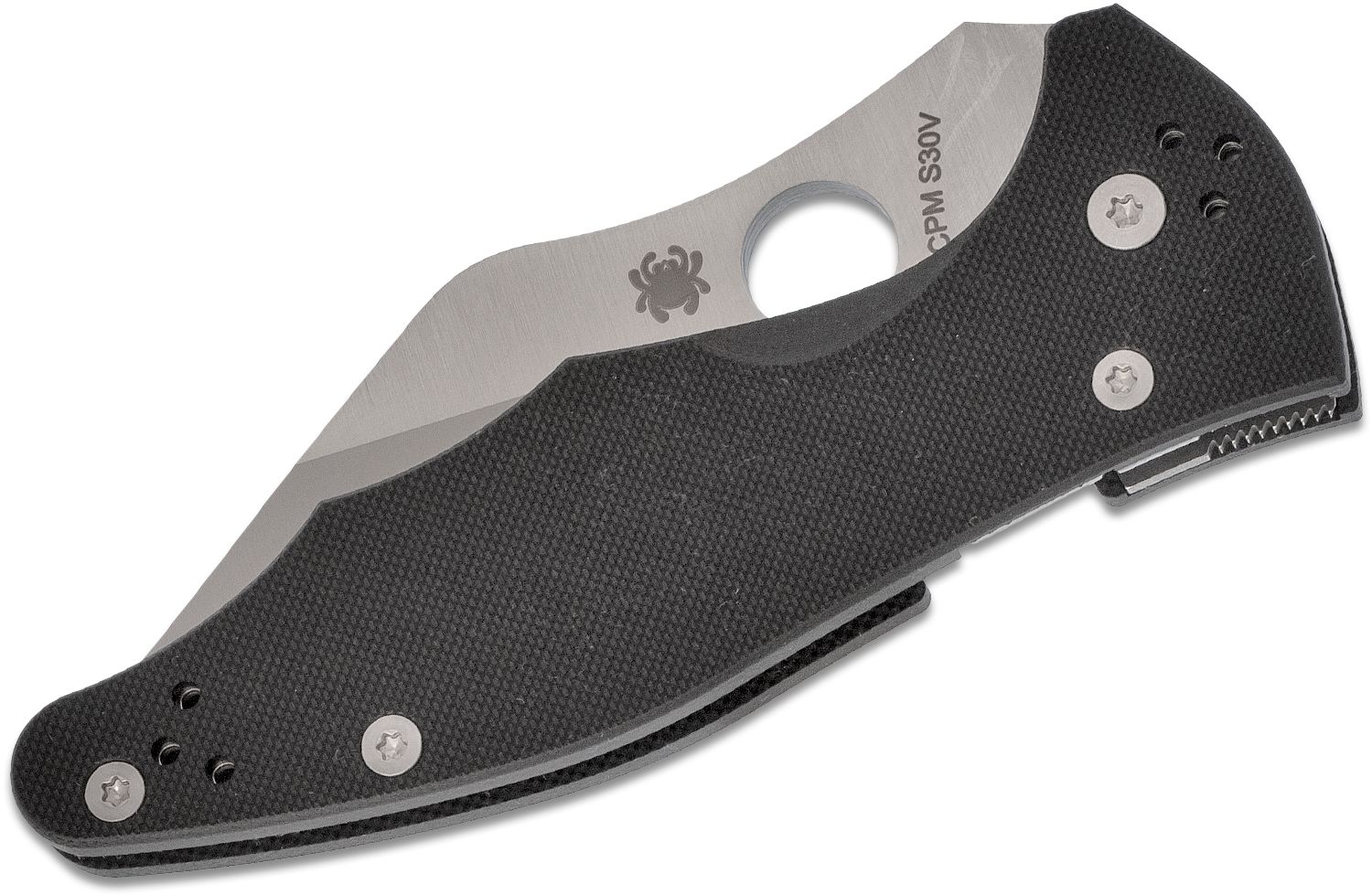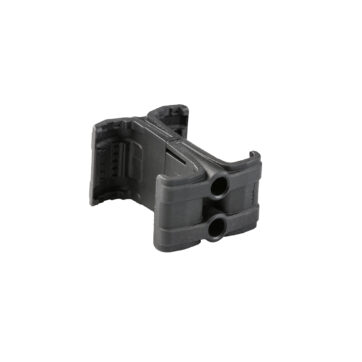Description
Spyderco Yojimbo 2 Folding Knife 3.2” S30V Satin Plain Blade, Black G10 Handles
When Michael Janich designed his first knife for Spyderco nearly 20 years ago, most personal-defense knives had traditional martial blade profiles, like spear points, Americanized tantos, and variations on the Bowie theme. Janich’s design—the first-generation Ronin fixed blade—challenged that convention and literally pioneered the concept of the “tactical Wharncliffe.” Today, Wharnie-style tactical knives are everywhere, but the roots of that trend can be traced directly back to Janich’s early designs—and Spyderco’s willingness to take a chance on them. Firearm
The original Ronin (literally “wave man” in Japanese, a term for a masterless Samurai) actually began as a collaboration with custom knifemaker Mike Snody. Janich had written an article on Snody’s knives that became the tipping point for him to become a full-time maker. As a gesture of thanks, Snody invited Janich to design “the ultimate neck knife,” which he would make as a custom blade. Although Janich had designed other knives previously, including the Tempest folder for the Masters of Defense knife company, he was determined to approach the design process from a fresh, empirical perspective.
He had already begun incorporating a demonstration called “Pork Man” into his knife self-defense courses to illustrate the cutting capability of small knives. Pork Man—a hefty pork roast tied around a wooden dowel and wrapped with multiple layers of plastic—not only demonstrated the cutting power of typical carry knives, but it also quantified the significant performance differences between different blade shapes.
To determine which blade styles cut with the greatest effect, Janich invested a small fortune in pork roasts, crafted an army of Pork Men, and started cutting. To his surprise, of all the knives in his collection, the ones that cut best were a pair of Frank Centofante-designed “gentlemen’s” folders from Spyderco with classic Wharncliffe-style blades (the C25 and C50).
As Janich dug deeper, he realized the secret of the Wharncliffe blades was their perfectly straight edges cut with full power all the way to the point. Conversely, the cutting power of blades with upward curving edges and lots of “belly” diminishes near the point. The Wharncliffe’s needle-like point also penetrates almost effortlessly during thrusts. Despite their elegant demeanor, Wharncliffes are tactical cutting and thrusting machines.
Armed with this knowledge, the Ronin design Janich presented to Snody was pure Wharncliffe. Initially, Snody was not thrilled with it and began to backpedal on his offer. When he finally made one and cut with it, however, he was blown away. Ultimately, he not only made a number of custom Ronins but shifted the course of his own knife designs to focus heavily on Wharncliffe blades.
Around this same time (1999), Spyderco founder Sal Glesser invited Janich to take over as the instructor of the “Martial Blade Craft” program. Sal was fresh from attending James Keating’s “Riddle of Steel” training camp and wanted Spyderco to host a series of knife self-defense courses at our headquarters in Golden. As the program gained steam, Sal also thought it would be good for Janich to design a signature Spyderco knife that reflected his system of knife tactics. Janich showed Sal the Ronin, explained the logic behind it, and hammered the point home with the help of Pork Man. Sal liked what he saw and the Spyderco Ronin was born.
At that time, Spyderco’s fixed blade market was still limited, so Sal also asked Janich to design a folder as well. Janich had already been working on a rough prototype of a folding tactical Wharncliffe, so he quickly adapted the design to incorporate Spyderco’s Trademark Round Hole and delivered a set of drawings and his own handmade plastic concept model of the design. Although Sal liked the design, development of it happened slowly, so Janich decided to “tip the scales” a bit. He went back to Mike Snody and commissioned a special one-off of his design, which he had named the Yojimbo (Japanese for “bodyguard”). Snody gratefully made the knife, posted photos of it on the internet, and mentioned that Spyderco might be working on a production version of it.
The Spyderco Yojimbo followed shortly thereafter, in 2003. Manufactured in Spyderco’s Golden, CO factory, it featured a full-flat-ground CPM S30V Wharncliffe blade, nested stainless steel liners, blue or black textured G10 scales, and an early version of the Compression Lock mechanism. Its three-inch blade was purposely shorter than its tapered handle because Janich had originally designed it to be legal to carry on airplanes, even during heightened security alerts. After 9/11, that design feature was moot but still made the knife legal to carry almost everywhere.
While many dismissed it as a “box cutter on steroids,” the Yojimbo gained more market traction than the Ronin. However, when Janich accepted a job managing another knife company in 2004, both he and Spyderco decided to remain friends, but discontinue the design.
Janich continued his Wharncliffe campaign with several other designs until 2009 when he joined Spyderco as a full-time employee. Although his duties focus primarily on technical writing and product education, he soon joined Spyderco’s R&D team, as well. He was also invited to create another signature design that reflected his philosophy on personal-defense knives. Taking full advantage of the lessons he had learned since the first Yojimbo, he designed the Yojimbo 2, which was released in late 2011.
The Yojimbo 2’s more refined design—backed by Janich’s relentless promotion of the Wharncliffe as a tactical blade profile—have helped it earn a solid place in Spyderco’s product line. Since it was purpose-designed as a self-defense knife, the live-blade version was joined by a dedicated trainer model in 2017. In an interesting example of “reverse evolution”—and with the help of custom knifemaker Mickey Yurco—the Yojimbo 2 also inspired a near-identical fixed-blade counterpart, the Ronin 2.
Although tactically themed Wharncliffes are commonplace these days, the evolution of this breed all started with the efforts of Michael Janich, Spyderco, and the spirit of collaboration and innovation that they have shared for more than 20 years.








Reviews
There are no reviews yet.